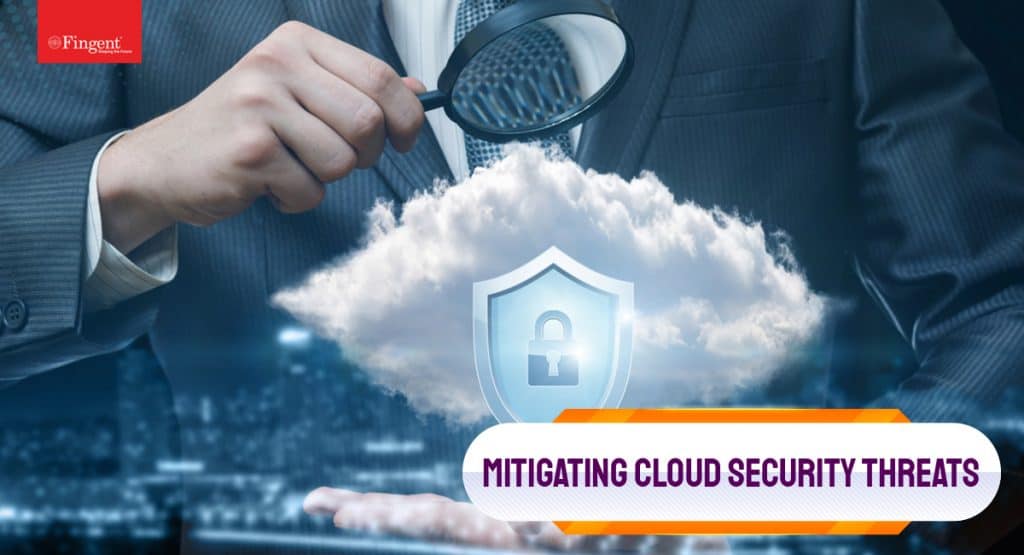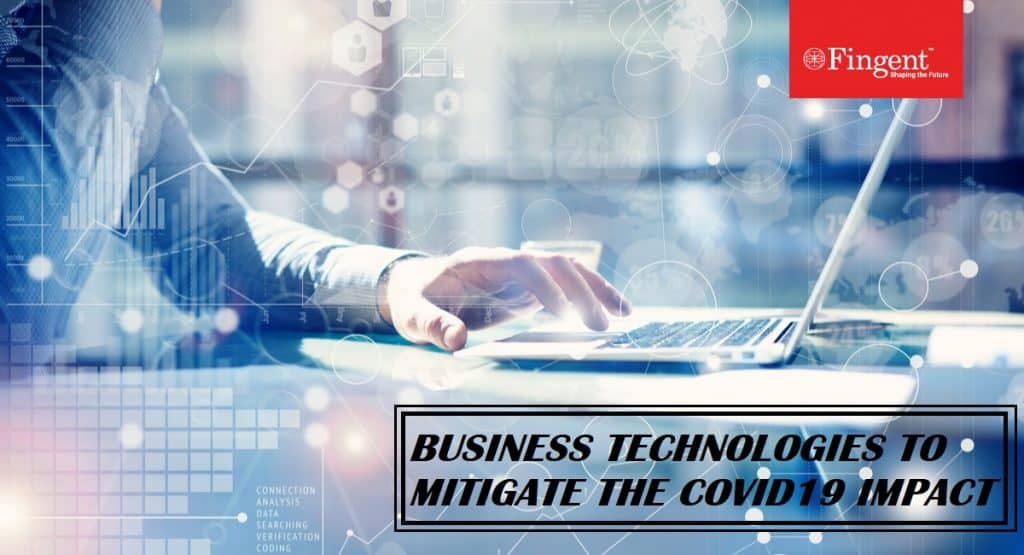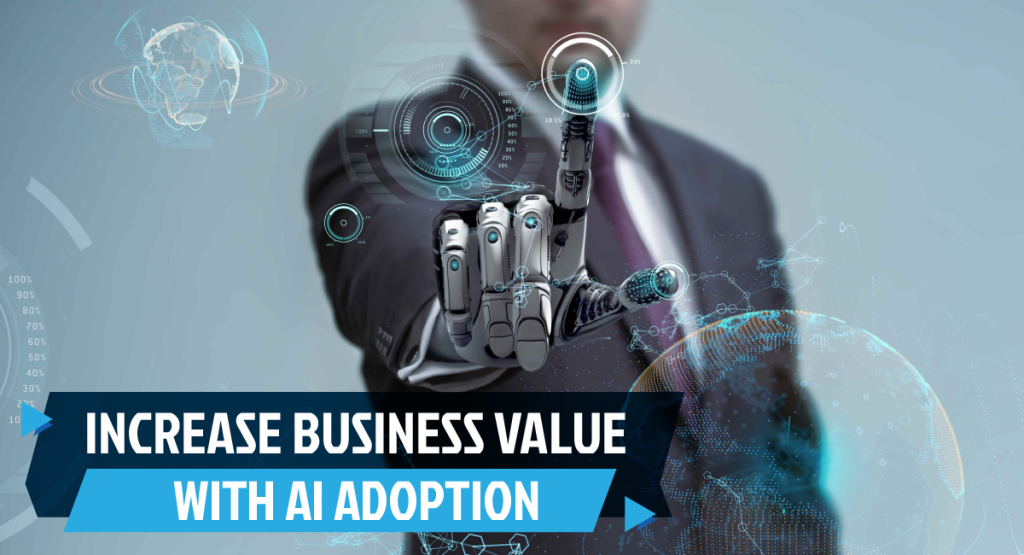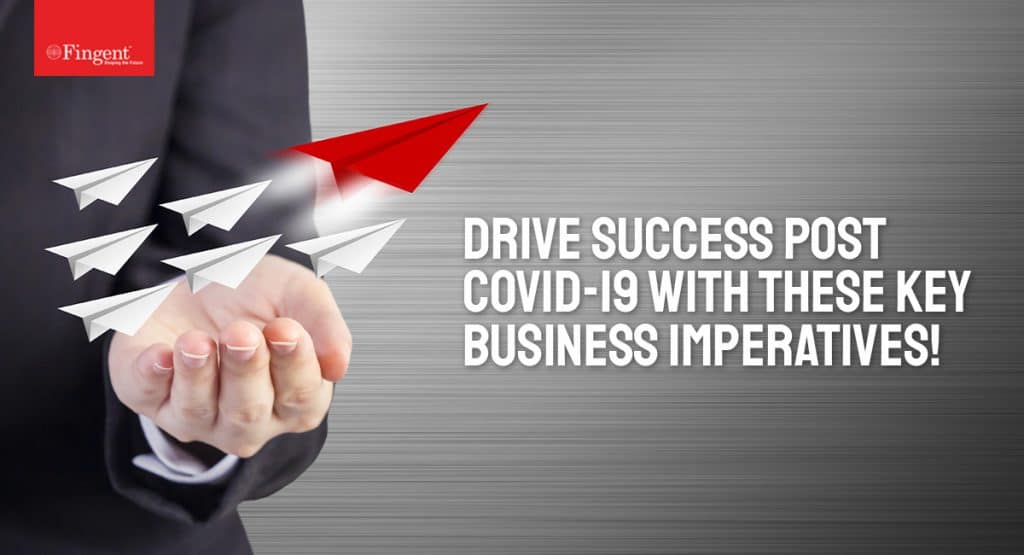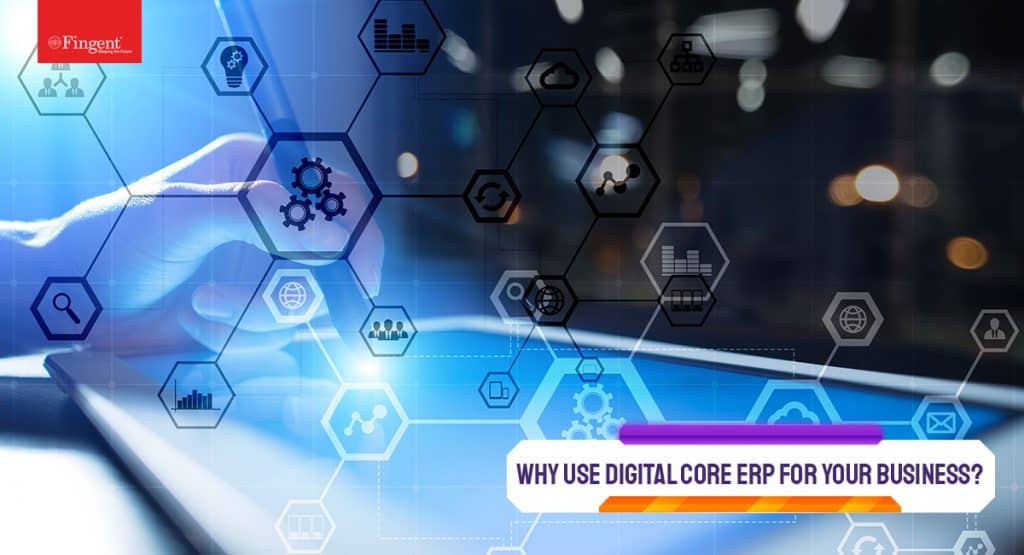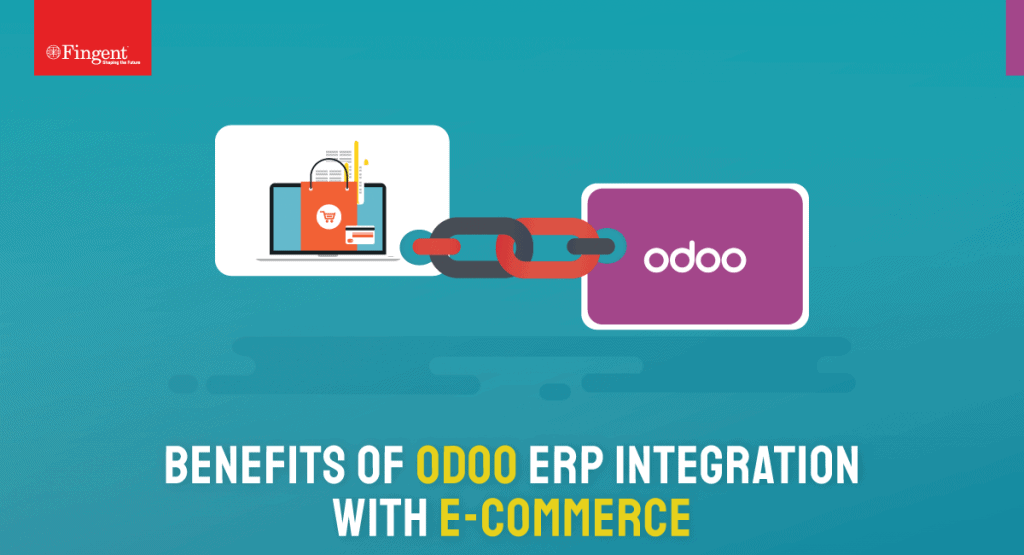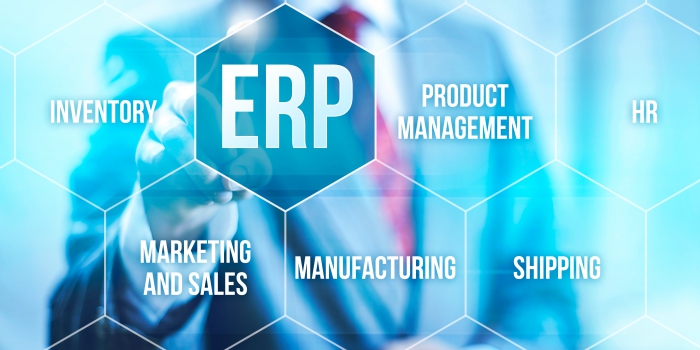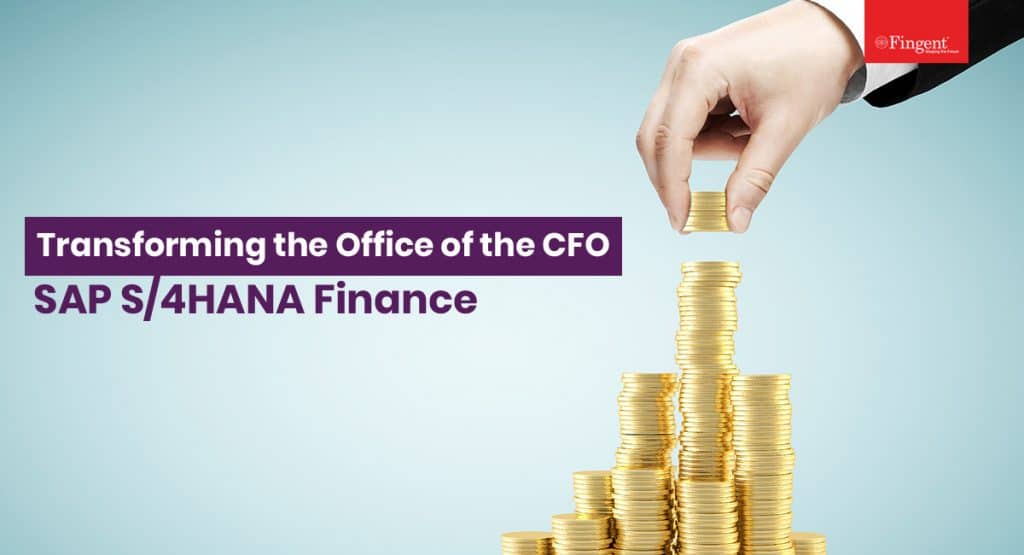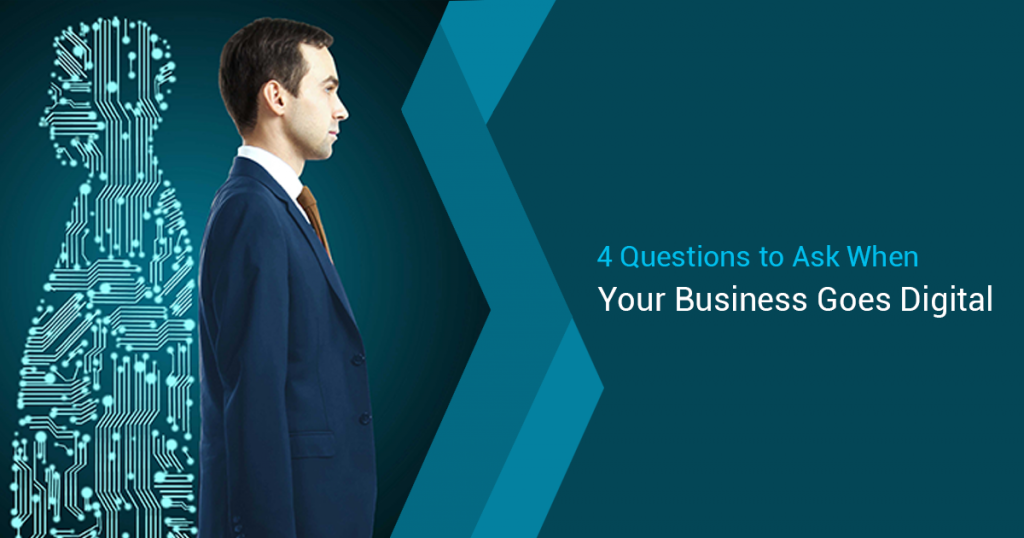Category: Digital Transformation
Identify the best approach to legacy system modernization
With changing customer behavior, enterprises have changed their norms and business applications. Now, retailers have to fulfill orders in a multichannel, multitouch eCommerce environment; consumer banks have to provide secure and user-friendly apps, and travel brands have reconfigured their approach to stay relevant in the face of disruptors.
All these changes require legacy system modernization.
What are legacy systems?
A legacy system may be different for each company, depending on their business. While many organizations prefer to leverage new software tools and run them on old systems, others update their applications one at a time. That said, few companies are still using both old software and old systems.
Read more: Four Ways to Future-Proof Legacy Applications
Legacy systems are considered old when the software fits the early 2000s, not 2020-21. However, not all legacy software or systems are defined solely according to their age.
What is legacy systems modernization?
Simply put, modernization means updating all or some of the IT stack to enhance your business processes and goals.
However, here are three definitions that will help you understand that legacy system modernization is more than just updating the system.
- Legacy software: The application(s) that your business depends on from the last year to the past decade or more.
- Legacy software modernization: Replacing and updating all inefficient systems, processes, and applications either partly or entirely.
- Re-platforming: Modernization begins with the platform on which your business applications are built. Moving your e-commerce platform from Shopify to Magento is an example of re-platforming.
There’s no denying that business leaders drive innovation at their companies. But they need the latest technologies to enable and support this innovation. They need fast applications, systems that support connectivity, and platforms that bring all these together. Most older IT companies fail to meet these modern needs. So, legacy system modernization is a must in such cases.
That said, digital transformation has pushed application leaders to find effective ways to modernize legacy systems.
Why do you need legacy system modernization?
Legacy system modernization is more than just updating the system. It is about bringing the entire organization to meet the digital environment.
Some of the reasons to consider legacy modernization are:
- It helps create and maintain a competitive advantage by building a solution that will help you stay ahead of competitors.
- Provides reliable processes with reduced risks, improves the system’s functioning, and improves performance.
- Ensures satisfied customers and happier employees by meeting UX and performance standards.
Watch video!
- It helps you scale in the future by transforming your IT stack into an agile platform for future change.
- Secures your IT infrastructure from internal security breaches and external threats
- From accounting software to CRMs, legacy systems introduce simpler integration with several new enterprise software used by various businesses.
- Addresses the financial inefficiencies of legacy system
- It helps realize growth opportunities, exceed customer expectations, and gain new customers by staying ahead of the enterprise software curve.
Have a look at some of the points in more detail.
Company finances
Integrated, up-to-date, and user-friendly software and systems will save your company on downtime, transactions, and more. For instance, Javelin Strategy & Research observed that mobile and online banking transactions cost only $0.10 while offline processing cost around $4.25 for financial institutions.
Older software and systems can help you spend less on technology, but they end up incurring other overhead expenses.
Software integration
Most organizations rely on third-party APIs to realize maximum enterprise value. For example, Zillow, a real-estate listing site, relies on the Google Maps API for full functionality.
Making sure your new software system is ready for integration will help meet the expectations of your customers, employees, and stakeholders.
Gartner recommends how to approach legacy modernization
Here is a three-step evaluation process provided by Gartner on how to approach the legacy system’s modernization.
Step 1: Use six drivers to evaluate your legacy systems
There are six main drivers for the modernization of your legacy system. These are the issues or concerns that the legacy application has created due to its architecture, functionality, or technology.
Three of these drivers are from a business perspective, such as business value, business fit, and agility. So, if your legacy system does not meet the new requirements, it will have to be modernized to fit properly and should be updated to provide more business value. Systems that are not agile enough to meet digital business demand are more likely to risk liability.
Step 2: Evaluate modernization
Once you identify the problem and select the opportunity, look at the modernization options. Here are seven options provided by Gartner. These options are ranked based on the ease of implementation- the easier it is, the less risk and impact it will have on the system and the business processes, the difficult, the more risk and impact it will have.
- Enhance and extend the application features by encapsulating its data and functions by making them available via an API.
- Be it cloud, virtual or physical, rehost the application component to other infrastructure without changing its code, functions, or features.
- Make minimal changes to the code but not the code structure, features, or functions to migrate to a new runtime platform.
- Restructure and optimize the existing code but not its external behavior to improve non-functional attributes and remove technical debt.
- Modify the code materially to shift it to new application architecture and exploit newer capabilities.
- Rebuild the application component from scratch while retaining its scope and specifications.
- Eliminate the former application and replace it while taking into account the new requirements and needs.
Step 3: Select a modernization approach that has the highest effect and value
The last step is to choose the modernization approach by mapping the seven modernization options concerning their effect on architecture, technology, functionality, costs, and risks.
It is important to weigh all the options to identify the extent to which they will all have the desired effect with less effort and maximum positive impact.
Read more: Business Process Re-engineering: Facing Crisis with Confidence
How can Fingent help update your legacy system?
Whether you are looking to re-architect your enterprise software or re-platform your entire system, or simply looking for new solutions that integrate with what you have going, we have you covered. We offer business process re-engineering and platform modernization services.
With expertise in various industries and a full-cycle in-house software development team specializing in legacy modernization, we can make your entire process efficient and personalized. Talk to our expert to know more about this.
Stay up to date on what's new

Featured Blogs
Stay up to date on
what's new



Talk To Our Experts
How can companies ensure cloud security amid cyber threats and malicious online activities?
The explosion of the cloud has changed the face of the business process as we know it. Nearly 90% of companies rely on the cloud. And yet, there has been some skepticism around cloud security. With recent breaches and technological attacks, maintaining cloud security has become the foremost concern for businesses worldwide.
Security experts at Fingent understand your concern, and so we have put together this blog about the importance of cloud security and the best practices which will ensure that you are secure on the cloud.
Why is cloud security important?
According to a report by Cisco, cloud data centers process 94% of all workloads. Despite the popularity attained by cloud technology, most of these companies are skeptical about cloud security. There is a reason for this. Statista reports the number of data breaches in the U.S alone increased to 156 million in 2020. It has also been reported that hackers attack every 39 seconds. This can be fatal to businesses in the following ways:
1. Managing remote work
Remote work lets you hire talent from across the globe. However, this arrangement entails inherent security risks. Using personal devices may expose your data to malware and phishing attacks. If a malicious virus enters through them into your cloud system, the damage done could cut your company off at its knees.
Read more: Why It’s Time to Embrace Cloud and Mobility Trends To Recession-Proof Your Business?
2. Security breaches
If your company chooses to run your application on a public or hybrid cloud, you are entrusting a third-party to take care of your data. This means you no longer have any control over data security. So it is critical to stay on top of things and ensure that your cloud computing provider is serious about this responsibility. Even when you know your provider will ensure top-tier security, it is your responsibility to verify that your data is secure as a client.
3. Comply with regulations
Data protection standards were put together to ensure the integrity and security of customer data. When you store your customer data on the cloud, it is your responsibility to keep it secure, especially if your organization belongs to a highly regulated industry like finance, insurance, banking, or legal. A data breach will destroy your reputation and brand because external parties will hold you accountable.
4. Build access levels
Unintentional leaks of data will compromise your business integrity and give your competition a leg up. Limiting data access only to those employees who need it can prevent errors that lead to data leaks.
5. Disaster recovery
Disasters such as flooding or fire can strike without warning. Unless your data is secured and protected, you could lose all your data. This may undermine customers’ confidence in your organization, delivering a death blow to your otherwise successful business.
Read more: How Secure is Your Business in a Multi-Cloud Environment
Best practices to ensure cloud security
- Carefully choose a trusted provider
- Review your cloud security contracts and SLAs
- Understand your partnership of shared responsibility
- Control employee access
- Secure user endpoints
- Maintain visibility of your cloud services
- Implement a strong password security policy
- Highest levels of encryption
“Cloud computing is a challenge to security, but one that can be overcome” – Whitfield Diffie, an American cryptographer.
True to Whitfield Diffie’s words, cloud security measures can be taken to encrypt the system that will help achieve adequate cloud security.
1. Carefully choose a trusted provider
Partnering with a trusted provider is the foundation for cloud security. Choose a partner who delivers the best in-built security protocols and follows industry best practices’ highest levels. You need to ensure that you confirm their security compliance and certifications.
Learn more: Take a look at how InfinCE, an infinite cloud platform, ensures secured work-collaboration within an organization and helps enhance company efficiency & growth!
2. Review your cloud security contracts and SLAs
In an event, SLAs and contracts are the only guarantees of service and course of assistance. 62.7% of cloud providers do not specify that customer data is owned by the customer, creating a legal grey area. Read through the terms and conditions, annexes, and appendices to ensure who owns the data and what happens if you terminate the services. Also, seek clarity on visibility into any security events and responses.
3. Understand your partnership of shared responsibility
When you tie-up with a cloud service provider, you enter into a partnership of shared responsibility for security implementation. Understanding the shared responsibility involves discovering which security tasks you will handle and which your provider will handle. It is important to ensure transparency and clarity in your partnership of shared responsibility.
4. Control employee access
Implementing strict control of user access through policies will help you manage employees who attempt to access your Cloud services. Cloud security best practice starts from a place of zero trust. Afford user access to data and systems only to those who require it. To avoid confusion and complexity, create well-defined groups with assigned roles. This will allow you to add users directly to the group rather than customizing access for each employee.
5. Secure user endpoints
Since most of your users access your cloud services through web browsers, it is crucial to introduce advanced client-side security to keep it protected from exploits. Implementing endpoint security solutions that include firewalls, antivirus, intrusion detection tools, and more will help to protect your end-user devices.
6. Maintain visibility of your cloud services
Remember, you cannot secure something that you cannot see. Using multiple cloud services across various providers and geographies can create blind spots in your cloud environment. Make sure you implement a cloud security solution that provides visibility of your entire ecosystem. You can then implement granular security policies to mitigate a wide range of security risks.
7. Implement a strong password security policy
Strong password security may sound basic, but it is an important element in preventing unauthorized access. Have a strong and strict password policy. To defend against most brute force attacks, enforce a rule that users update their password every three months. You may also implement multi-factor authentication. This would require a user to add two or more pieces of evidence to authenticate his/her identity allowing you to trust your users while ensuring that they are authorized users.
8. Highest levels of encryption
Your data may get exposed to increased risk while sending it back and forth between your network and the cloud service. You must consider using your own encryption solutions for data, both in transit and at rest. Encryption keys will help you maintain complete control over your data.
Read more: 6 Proven Ways for Businesses to Combat Cloud Security Risks
Don’t wait till it’s too late!
You never know when a stealthy hacker could attack your business and make you go under. All organizations, independent of their size, can benefit from these best practices and improve their cloud usage security.
At Fingent, our experts go above and beyond to ensure that your business is hacker-proof and secure. If you need to discuss cloud security options, do not put it on the back burner! It could creep up on you and set your whole business afire, ruining your competitive edge and spelling doom for the future. Call our experts and discuss your options today.
Stay up to date on what's new

Featured Blogs
Stay up to date on
what's new



Talk To Our Experts
How to gain maximum value from technology investments for your business?
The slow economy stemmed from the COVID-19 pandemic is forcing organizations to identify and cut all unnecessary costs. Unfortunately, technology investments also fall prey to these budget cuts. It happens when businesses invest in technology without adequate planning.
According to a survey, 29.2% of respondents holistically examine their technology usage while searching for efficiencies. It may mean canceling or delaying new projects and purchases or reducing or canceling maintenance and support contracts for existing investments.
Research by Accenture reveals that while 47% of the companies are building their future growth strategies on mobility and technology, considering inefficient technology as one of the top hindrances to their growth. It is clear that IT-led innovation is the need of the hour, and 82% of companies are investing specifically in technology for improved growth.
Simply put, now, it is crucial to improve the return on investment of resources, optimize costs, and select the right solution when making sourcing decisions.
Read more: Navigate The Business Impact Of COVID-19 With These Hot Technologies
Here, we share a few tips to help you gain full value from your technology investments.
Ways to optimize costs
Gartner reveals that optimizing costs is essential for businesses and is one of the best ways to control spending and attain cost reduction while maximizing business value.
Optimizing costs should take into account:
- Automating and digitizing business operations
- Simplifying and standardizing applications, platforms, processes, and services
- Obtaining the best terms and pricing for business purchases
While this means ensuring that technology investments generate the maximum possible value, it also means cutting costs and considering how each technology investment drives business value.
Some technology may be expensive, but it doesn’t mean that it isn’t providing value to the organization. Expensive technology may already be optimized because of the value it generates, while inexpensive technology may be unused and wasted. Therefore, it is important to make the right decisions regarding purchasing hardware, software licenses, or cloud services contracts.
Once you have identified and mitigated what you do not need and what you need, there are no more costs to reduce. It is time to look at how to optimize technology assets.
Ways to get the most out of your tech investments
Despite the cutbacks and search for savings, many organizations continue to invest in technology projects and accelerate their digital transformation initiatives. However, even with the economic slowdown coupled with pandemic-related uncertainties, organizations that have performed well during 2020 are looking to increase resilience by reducing risks and demanding shorter ROI periods on investments.
That said, the key to maximize ROI is preparation. It is essential to know that you’ve selected the right solution and are ready for implementation. Several surveys done in the past suggest that the software chosen is rarely the reason for any IT project’s failure. And a few leaders even agree with this, revealing a lack of investment in preparation, project management, and implementation. Even the simplest of IT systems require some amount of work to install and configure. So, the more complex your environment is, the more careful you will have to be.
Read more: 11 Practices Followed by Leaders to Build Resilience and Ensure Rapid Business Recovery
Key factors to consider while developing a technology strategy to improve corporate performance are:
Investment profile: Your management team must identify your IT investment percentage (allocated to build significant capabilities) versus the foundational investment. Ideally, foundational investments should not be more than 40% of the total annual investments.
Organization focus: You must identify whether a significant portion of your internal resources aims to drive innovation or growth. Also, find out if you have the proper operating processes in place to drive these investments.
Tenure: You will have to figure out if your workforce has the right experience and skills to achieve the target.
Investment economics: Move over traditional measures and instead identify newer ways to evaluate your projects and investments.
A few technologies worth investing
Following are some of the technologies worth investing in the present business scenario:
- Artificial Intelligence (AI)
- Blockchain
- Internet-of-Things (IoT)
- Cloud
- Cybersecurity
- Self-driving technology
- Streaming media
Tips for getting maximum value from technology investments
To get maximum value from your technology investments, you should:
- Be prepared with clear objectives and outcomes. You must ensure that your vision aligns with that of the new technology vendor.
- Ensure that you have people, processes, and governance for leveraging the technology when deployed, reducing the time to both value and ROI.
- Identify and assess your data sources’ quality to develop appropriate metrics for accuracy and completeness of data and check for any improvements.
- Invest in the implementation and system or process integrations to make sure they are carried out successfully. If you are using any third-party service provider for the implementation, ensure that you hire a reliable and trained team like Fingent.
- Identify users and key stakeholders and invest in their time to maintain the system.
- To reap benefits early in the project and demonstrate the value of initial investments, take a phased approach. Phasing could be by business unit, geography, or environment depending on the organizational structure and business goals. This will ensure that the project is manageable.
- Provide both initial and ongoing training in phases to allow end-users to familiarize themselves with the features and functionalities they have learned about before undergoing further training. That said, make sure the new users are also appropriately trained.
- Ensure that third-party consultants have completed their vendor training or certification programs before allowing them to use your tools. Also, check if you are using the latest version of the tool. If needed, arrange for additional training.
Read more: Fingent Speaks: What it Takes to Build a Successful Digital Transformation Strategy
Be smart with your tech investments
With technology and digital transformation becoming more pervasive across all industries, technology investment can make a huge difference in winning or losing a business. By focusing on the tips discussed in this article, companies can maximize value from their technology investments.
Technology wins only if it can appease users. A bad customer experience forces the customer to switch from vendor A to vendor B. Not only should you identify and invest in the right technology, but make an emotional connection to craft human experiences that drive customer satisfaction and differentiate you from your rivals.
Fingent helps you make a fortune out of tech investments by helping you leverage the latest technology trends. Our business technology consulting services focus on helping businesses tackle technology problems, attain business objectives, and derive value from tech and IT investments. Chat with an expert to learn more.
Stay up to date on what's new

Featured Blogs
Stay up to date on
what's new



Talk To Our Experts
How to plan a successful COVID-exit strategy and get your business on track?
If the 2008-09 global recession was due to financial meltdown and economic vulnerabilities, the 2020 economic crisis stemmed from the global pandemic and subsequent health emergency. Both incidents hold lessons that business owners and leaders should follow to fast-track their organizations’ recovery in 2021.
Read more: 11 Practices Followed by Leaders to Build Resilience and Ensure Rapid Business Recovery
Economic growth in 2021 is likely to improve compared to the growth rate in the second half of 2020. However, it will still be uneven. Additionally, the timing and growth will vary for different products and services and geographic markets.
Given the uncertain recovery of the economy, leaders and business owners need to plan a successful strategy to lead their teams and organizations over the year. The focus should be a forecast of their companies’ revenue potentially earned in every quarter of the year.
That said, the COVID-exit strategy is not straightforward. Leaders and business owners will have to make a few difficult choices.
- How much should my organization change, and how fast?
- How far should I go to change my current strategy and adopt faster and more agile approaches?
These are some of the questions that you’ll probably need to figure out. However, remember that if your organization does not move quickly, it will lose itself in the crowd.
One of the best ways to transform is to apply the “all-in” approach to transformation. It means to go ahead with full speed. Whether your organization’s transformation should be about portfolio moves or performance improvements misses the point. If you want to succeed, you must consider both and make your transformation go big. This approach will help your organization emerge stronger and sustain the competitive edge for a long time.
This article discusses how leaders can build a successful COVID-exit strategy and begin a holistic transformation.
Three fundamental steps that organizations can consider
If your organization is successfully managing portfolio and performance moves simultaneously in a transformation, you can invest in three foundational steps:
- Getting an honest view of the business’s full potential across both portfolio and performance moves.
- Understanding the impact of those moves.
- Creating a program with a proper structure and sequence to maximize value creation.
While understanding the full business potential, leaders must know the importance of setting a high aspiration. According to McKinsey & Company, companies that put their gross transformation targets at 75% of trailing earnings are more likely to create value sustainably.
Incrementalism may be risky for organizations trying to break out from the COVID-19 crisis. Management teams seek safety to confront the current situation and avoid the discomfort of going in for the big moves. In reality, leaders must use this time and opportunity to challenge assumptions and overcome social barriers that block bold moves.
Read more: Top 5 Organizational Imperatives for Business Leaders to Become Winners in the New Normal
Successful digital transformation requires leaders to answer these questions
- Which line(s) of business does my company no longer own naturally?
- Which trends accelerated by COVID-19 could transform my business?
- What are the new efficiencies and business models developed by my company to meet the COVID-19 necessities?
- How can my organization benefit from the advantages of those new efficiencies and business models in the next normal?
- How has my organization’s health changed, and what elements and capability building will be required to maximize the impact of the COVID-exit?
While you are trying to balance portfolio and performance moves, you will also need to consider the sequencing. Portfolio and performance initiatives must go hand-in-hand. You must consider each move by defining the magnitude, timing, and risk of impact.
Read more: Fingent Speaks: What it Takes to Build a Successful Digital Transformation Strategy
According to McKinsey & Co., stand-alone portfolio moves capture less than half of value creation, especially in areas such as deal premiums, performance upside, or growing new business. However, if your strategy is ill-conceived, even stand-alone performance moves can take time and maybe outweighed by acquiring the wrong business lines.
Two cases of “all-in transformation”
While you must consider both portfolio moves and performance improvements, which of these should you execute first? The answer depends on the organization and context.
How and when you implement your transformation elements must be guided by your organization’s various circumstances and potential at any given time.
We’re listing two cases of “all-in transformation” here. Both the examples highlight the significance of sequenced transformation in unlocking business value. In both cases, the organizations identified the required potentials, set high aspirations, and deliberately sequenced the portfolio and performance moves to achieve the results. However, the companies differed in how they advanced from there.
First case:
In the first case, the value creation and its sequencing were as follows:
- The company streamlined its cost structure, focused on resource allocation, and carved out a few of its competing lines after consolidating business units and simplifying the executive team. This reorganization enabled about 10% of total transformation value creation.
- Next, the company improved the effectiveness of its sales force which generated high revenue growth. It also implemented automation and simplifications to reduce overheads and adopted a strategic procurement approach to reduce external expenditure. These operational improvements enabled about 75% of transformation value creation.
- Lastly, the company invested in optimizing firms it had acquired and integrated a similar set of core capabilities.
Second case:
The second case, though an all-in transformation program, took a separate route.
- After a significant merger, the company re-evaluated its core business portfolio and divested non-core business. This approach enabled the organization to focus on financial flexibility by using the proceeds to buy back stock. Overall, this performance move allowed the company about 75% of value creation.
- By streamlining its operations, focusing on revenue growth and margin improvements, the company’s performance transformation enabled about 25% of value creation.
Read more: 7 Ways for Your Business to Overcome the COVID-19 Aftermath
From these examples, leaders need to understand that they cannot choose between a portfolio-first or performance-first approach while planning their exit strategy. The order is not important, but leaders will have to accept that they are going all in, set high aspirations right from the start, and let the realization of full potential determine what happens. Avoiding an ad hoc approach to value creation may have significant implications over the long-term. Research reveals that organizations that go for the “all-in” transformation approach are more likely to show lasting improvements and are nearly three times more likely to be ahead of their competitors.
The takeaway
After a year of uncertainties, CEOs and business leaders are aware that the COVID-exit path will not be easy. However, if companies adopt an all-in transformation approach, they can expect more dynamism and flexibility during the journey.
Read more: 10 Services Offered by Fingent to Prepare Your Business for the Future of Digital Innovation
At Fingent, we use cutting-edge digital solutions and rapid innovation to help businesses reinvent the future. We’re closely monitoring the situation and helping businesses return to work with our technology consulting and innovation capabilities. Feel free to get in touch with us to know how we can transform your business digitally.
Stay up to date on what's new

Featured Blogs
Stay up to date on
what's new



Talk To Our Experts
Right ERP software helps CFOs contribute to organizational decisions more logically.
Selecting the Right ERP Solution: Crucial Points a CFO should Keep in Mind
The CFO is one of the most significant decision-makers in an enterprise today. CFO is the protector of your business’s financial records and has an ultimate say while making financial decisions for the company. However, in this digital age, the role of a CFO is evolving. A CFO takes a more holistic approach in the current scenario and guides the organization towards success by leveraging digital intelligence. CFOs must be equipped to keep their company afloat during an unexpected crisis such as the pandemic, identify new investment opportunities and help the business prosper in the face of intense competition. A tall order but not impossible.
To achieve this, CFOs must look at their existing systems to upgrade or replace those slowing down the organization. CFOs are responsible for ensuring that any new technology they adopt has what it takes to turn the business into an effective market disruptor.
This article covers a CFO’s top 5 considerations when choosing an ERP solution.
Read more: How Organizations can Gain a Competitive Edge by Implementing Digital Core ERP
1. Obtain hands-on knowledge on the process
CFOs might find it tempting to leave the ERP process knowledge to technical teams, but this could mean that they miss out on learning the crucial aspects of the ERP that will affect the organizational costs. Technology assists CFOs in controlling accounting and tax standards and in engaging with the business to drive value jointly.
Read more: SAP S/4HANA: Transforming The CFO into a Business Value Creator and Role Model
Technical jargon can be overwhelming for CFOs. But they need to clarify their questions with their ERP service provider.
To get you started, here are some important software concepts related to ERP implementation.
- Installation: Know what is required of your current server.
- Customization: Make sure the ERP software suits your organization’s specific requirements. Compared to other ERP systems, SAP requires minimum customization. It has many customizable solutions that are suitable for all types of businesses.
- Configuration: Ensure your software is in harmony with your workflow. Thankfully, SAP is suitable for any size organization.
Apart from this, confirm the ERP is hosted on the cloud because it is easier to handle and more secure to manage. Those who have migrated to cloud-hosted ERPs reap the benefits during the pandemic, where remote working is the only option to ensure business continuity. Making sure the solution is rewritten for the cloud will help CFOs keep up with any future changes.
2. Invest in a service provider with vision and efficiency
Your ERP solution’s longevity is determined by your service provider’s efficiency and capability. Do not hesitate to clarify certain aspects of your service provider and the services they have to offer you. Find out if their financial situation makes it a viable option for a long-term contract.
You also need to identify if your service provider can give you access to all the information you need for years to come. Additionally, consider if your vendor is relevant to the current market scenario and can stay relevant in the future. To that end, it may be helpful to enquire about their research and development plans to ensure they will provide you with high-end products now and in the future.
Read more: Why Choose Fingent as Your Odoo ERP Partner
3. What are the aspects of integration?
ERP is one of the multiple systems that determine your organization’s performance. To achieve optimum results, you will have to enquire about integration with other aspects such as EPM, SCM, HCM, and CX, to make way for a smoother workflow. How? When you have various platforms working together harmoniously, you can avoid data inconsistency between two systems.
Read more: 5 Reasons to Integrate Your E-commerce Application with Odoo ERP
To avoid cumbersome processes after ERP implementation, you must consider if the vendor you are planning to hire can provide you the best support required. Talk to them to ensure that all the different platforms function as one unit. The most relevant integration for a CFO is integrating ERP with EPM (Enterprise Performance Management). Picking the right vendor will help you with such critical integrations.
4. Choose the right ERP
ERP that fits one company does not match the other because each company has its own unique needs. Whether a business is small, medium, or large, a CFO must be aware of the need for financial planning tools. Hence, as a CFO, you must confirm your ERP caters to the size of your business. Additionally, your current ERP must be scalable to accommodate employees from various departments. In other words, you will need a scalable ERP system for your entire operation to work smoothly.
Read more: 5 Tips For Getting The Best Out Of Your ERP System
5. Identify the needs of all departments to ensure teamwork
The ultimate aim of a CFO is to ensure that the ERP they select is delivering excellent results. Hence, it is crucial to have all your employees on board and understand the ERP system.
To achieve that, you need to identify the needs of each department in your organization and make sure that ERP meets all those needs. This allows for an enhanced workflow among all employees. Include your organization’s CIO and other leaders during the planning and implementation of ERP software. They can spread a positive outlook toward the new system among the rest of the employees.
Read more: How Fingent Helps CFOs Gain New Insights and Reliably Enable Key Decisions
Are you ready to steer your business to success?
Understandably, implementing ERP will take time and effort. Besides, as a CFO, you will have to identify the potential and tangibly justify the cost of ERP. However, choosing the right vendor can make implementation hassle-free and result-oriented.
It is no surprise that successful implementation and deployment of ERP hinges on the right partnership with the right vendor.
As an Official Ready Partner for Odoo and SAP Silver partner, Fingent is the right provider to assess and understand your unique business requirements and help you become a cloud-powered enterprise. We offer dramatically shorter implementation timeframes. Our ERP allows for rapid configuration, customization, and deployment, significantly reducing the implementation cost. We provide both cloud and on-premises ERP solutions. So, do you feel ready to steer your business to success? Give us a call!
Stay up to date on what's new

Featured Blogs
Stay up to date on
what's new



Talk To Our Experts
Instead of reaping one of the highest revenue growth-spurts, the hospitality industry faced the toughest-time in industry history, due to the COVID-19 pandemic.
How the hospitality industry can leverage technology for a stronger resurgence in 2021
While the industry is known as an early embracer of digital disruption, many brands struggle to gain customer recognition. Surveys reveal that even before the COVID-19 pandemic, 72% of the guests were more likely to return to a hotel having tech-led services they expected. With the onset of the pandemic, these expectations have only increased.
A recent survey by Deloitte Digital Study suggests that over 60% of travelers prefer to stay at a hotel having contactless services such as keyless room entries, voice assistants, communication with the staff using phones, and contactless check-ins and check-outs.
That said, 2021 looks promising. Travel bubbles and corridors are forming, facilitating new flows and movement and consequently hope for the hospitality industry. Some players in the industry are even leveraging technology to combat the losses due to the pandemic.
Read more: How Hotels are Using Technology for Competitive Advantage
Here, we discuss five cutting-edge technologies that can help the hospitality industry revive its lost glory in 2021.
1. Chatbots
Many hospitality industry players have incorporated chatbots in their websites, social media accounts, apps, and even phone systems.
Instead of calling a travel agent or visiting several websites to read reviews from travelers, users can simply ask their questions to chatbots. Chatbots can use data from users, interactions, and products to provide personalized deals and recommendations. Additionally, bots can make reservations, compare prices and products, and even request quotes to create convenience for customers.
Chatbots can be customized to understand complex questions, detect upset customers, and immediately direct them to a human agent who can answer them.
Interestingly, chatbots offer a good ROI. They reduce operational costs while enabling support agents and enhancing the overall customer experience.
With advances in technology, natural language processing, and machine learning, chatbots can be trained further to answer more inquiries and recognize more inputs.
Read more: 11 Tech Trends That Will Disrupt Businesses in The Next 2 Years
2. Cloud and Internet of Things
Cloud-based solutions help us access anything we want remotely. Along with IoT (Internet of Things) devices, cloud-based applications can help streamline operational complexities such as assigning staff duties, coordinating housekeeping, and confirming compliance with newly enforced safety and hygiene standards.
IoT helps with the remote monitoring and management of physical things in the hotel or resort premises, such as TVs, door keys, and even thermostats. Voice-based intelligent assistants such as Siri, Google, and Alexa also help control the connected devices remotely.
Simply put, hotels can benefit tremendously if their primary services are internet-based. Technology offers guests better control over their stay and experience and enables the hotel staff to get a more detailed picture of what works and what needs to be upgraded. Enhanced tools can provide guests with a superior experience, personalized communication systems, better assistance, and hygiene standards.
Read more: How Is Augmented Reality Reshaping Travel and Tourism
3. AI-powered systems
The hospitality industry will soon see a surge in the use of Artificial Intelligence or AI-powered systems. The system can include facial recognition with mask detection and thermal camera integration to improve safety and security within the premises.
Geofencing technologies can help brands build location-awareness apps to drive real-time updates and rebuild consumer confidence related to the tourism sector’s safety. It can even allow brands to send out push notifications such as instructions, directions, special offers, or promotions to customers based on their current location or journey map. These lead to a seamless experience when combined with smart queues and touchless check-ins upon the guests’ arrival or prompt them for payment on their smartphones during the check-out.
Read more: 9 Examples of Artificial Intelligence Transforming Business Today
4. Mobile payment technology
Hospitality service providers can leverage mobile technology and data derived from digital payment tools such as Amazon Pay to offer personalized in-store and online purchase experiences to their customers. Typically, mobile wallets apply near-field communication (NFC), Magnetic Secure Transmission (MST), and even sound waves to communicate with the point of sales without touching it for in-store purchases. For online payments, digital wallets can autofill payment information using biometrics or fingerprints to confirm the payer’s identity for added security.
Mobile banking, QR, payment links, and applications are a few additional functionalities that brands can adopt to augment and enhance the mobile payment process.
Leveraging technology to accept mobile payments come with several benefits:
- While traditional payments can take around 30-45 seconds to complete, a contactless transaction is completed within 15 seconds.
- Mobile payment includes two-step authentication, the limited amount that can be expended per transaction, and built-in features to prevent duplicate transactions. Additionally, the mobile payment data is heavily encrypted when stored and transferred.
- Businesses can link the mobile wallet approach to loyalty programs, push notifications, special deals, and other value-added services.
- Touchless/ contactless payment allows customers to keep their hands clean and restricts their exposure to the virus.
5. Data Science
Restaurant chains and groups are excellent data science candidates as they generate a significant amount of data both internally and externally (social media, email, inventory, POS systems, phone calls, etc.). The pandemic is pushing restaurants and hotels to invest in systems and training their staff to make decisions based on data that would otherwise be impossible to process.
A few ways restaurants have used big data to improve their efficiency and increase sales are:
- Using ordering trends and marketing analytics, restaurants can identify their most popular and least popular dishes and how a particular location and season can impact what gets ordered. This helps them optimize their menu and make informed decisions.
- Big data allows hotels/restaurants to recognize patterns and predict factors that affect the inventory counts.
- Through transaction data, loyalty program data, and social listening, restaurants can identify what can improve customer experience and what makes them come back.
Using data to optimize the menu can impact customer retention. Using data to improve customer retention can help modify the menu.
There’s no denying that going digital is the norm today, and the hospitality industry will have to continue to adopt technology to meet the shifting customer demands.
Read more: 10 Services Offered by Fingent to Prepare Your Business for the Future of Digital Innovation
Fingent helps build custom, mobile-first workplace platforms for the hospitality industry that can automate your workflows, reduce your staff turnover, and enable you to deliver superior customer experiences.
Looking to rebuild and reinvent your hospitality business in 2021? Talk to an expert right away.
Stay up to date on what's new

Featured Blogs
Stay up to date on
what's new



Talk To Our Experts
The post-COVID-19 business scenario will not look the same across industries or countries. It will pose challenges and opportunities to leaders.
Tips for Business Leaders to Attain Success in the New Normal
While traits like empathy, authenticity, clarity, and agility remain crucial during this uncertainty, leaders face challenges to maintain a sense of connection and togetherness within their teams. However, as businesses are beginning to get back on track, leaders will have to leverage new insights and advancements to rebuild the workplace rather than returning to it as usual.
This article discusses five best practices that business leaders can follow and prepare their organization for the future.
Read more: 11 Practices Followed by Leaders to Build Resilience and Ensure Rapid Business Recovery
1. Have a clear purpose
There is a big difference between a “factor” and a “must-have.” A company that has a unique affirmation of its identity embodies everything the company stands for. This purpose helps future-ready companies to attract people to join the organization, stay and thrive. Also, investors understand why it is valuable.
According to a survey, 82% of companies in the U.S said that organizational purpose is essential, but only half of these companies said their purpose drove impact. So, what can bridge the gap?
Leaders can set the purpose in motion and make it real for people. This can be achieved when employees identify and feel connected to their organization’s purpose. For example, Amazon leaves a chair vacant during meetings to represent the customer’s role in decisions. CVS Health stopped selling tobacco products to achieve the purpose of helping people to attain better health.
Research reveals that people who live their purpose at work are four times more likely to report better engagement levels than those who do not.
Simply put, purpose inspires commitment, reveals the untapped market potential, and even navigates uncertainty. So, companies must articulate what they stand for and use their purpose to connect employees and stakeholders in ways that justify their business choice.
Read more: 7 Ways for Your Business to Overcome the COVID-19 Aftermath
2. Create a value agenda
An organization must create a value plan that helps convert its ambitions and targets into tangible elements such as business units, product lines, regions, and capabilities. This allows companies to articulate where value is created and set it apart to drive future success.
Organizations must use the value agenda to focus their efforts and enable their employees to understand what matters. If this is achieved, the results can be significant and hard to replicate.
For instance, Apple ensures it provides the best user experience. The company gives importance to not just the product design but also the product packaging. Apple has a dedicated packaging team to ensure users elicit the right emotional response while unboxing.
Having a clear value agenda will help a company devise better strategic priorities and become agile to shift resources as priorities change.
3. Distinct culture
Future-ready companies need to have a distinct culture that can help them distinguish themselves from others. Culture includes rituals, symbols, behaviors, and experiences that describe how an organization works.
For example, Amazon enforces its “two-pizza rule,” according to which every internal team should be small enough to be fed with two pizzas. This rule supports the company’s approach to meetings: no PowerPoint, shorter meetings, and start with silence to allow participants to go through the pre-meeting memo. These approaches may sound silly, but in reality, it enables the company to reach better decisions faster.
For successful companies, culture forms the backbone and fuels sustained excellence in performance over time. Studies show that companies with strong cultures are three times more likely to achieve higher total returns to shareholders than those without a healthy culture.
Leaders have to consider specific behaviors that employees at all levels adhere to create a robust performance culture.
4. Flatten structure
In recent years, the business environment has become more complex and interconnected. Many companies have adapted to these changes and created a more sophisticated matrix expecting it to solve market complexity. However, this is not how it should be.
Future-ready organizations must prepare themselves to become fitter, faster, flatter, and better at unlocking considerable value. The goal should not be to eliminate hierarchy but to flatten the organization, adopt the most uncomplicated profit and loss management structure, and reinforce business objectives with robust performance management and other mechanisms.
For example, Haier, a China-based company of appliances and electronics, adopted emergent and agile teams instead of the traditional hierarchy. The multinational company has no layers, no conventional bosses, and no middle management.
Another example to consider is Google. It follows a “non-zero-sum” management approach that emphasizes developing a communication line running in all directions rather than reporting relationships. It brings together cross-functional and professional skills while avoiding hierarchical mindsets. Such teams can act fast because they are flexible, are ready to learn from mistakes, and try new approaches.
In simple words, the future-ready organization must include models that are designed around people and activities. As technology advances, bosses will become coaches and enablers rather than micromanagers. When organizations set their priorities and ways of working, responsibilities, and transparent decisions, they can empower their frontline staff to make decisions.
Read more: Five Business Technology Trends CEOs Need to Embrace in 2021
5. Prioritize data-rich tech platforms
Data is of utmost importance, and future-ready companies need to take it seriously. For example, Netflix transformed from a small DVD-provider to a multifaceted global OTT content platform and media production company by leveraging insights from its user data through powerful algorithms.
So, future-ready companies need to understand that data can empower decisions, and the value agenda provides unexpected yet promising opportunities.
To get maximum benefits from the data, future-ready companies must create practical approaches to data governance, redesign processes in a modular fashion, and leverage cloud-based technology by dynamically reallocating their budgets. By utilizing the data effectively, companies can develop new products, services, and even LOBs.
Read more: Navigate Business Impact Of COVID-19 With These Hot Technologies
There’s no denying that the COVID-19 pandemic has left many businesses in grief and economic dislocation. Business leaders must lead with empathy and compassion as they start to re-energize and revitalize their teams. The best leaders establish and reinforce behaviors that can support their organization during this crisis and after.
Read more: Business Process Re-engineering: Facing Crisis with Confidence
Contact us to know more about how Fingent’s leadership supports customers to ensure business continuity and enables employees to engage effectively during the current pandemic.
Stay up to date on what's new

Featured Blogs
Stay up to date on
what's new



Talk To Our Experts
What comes under the scope of digital transformation? How does it differ from digitization and digitalization?
Digital Transformation vs. Digitization vs. Digitalization: Decoding the Concepts
The term digital transformation captivates every enterprise leader. Given the hype from software vendors and analysts, it’s hard to find an enterprise technology today that doesn’t self-endorse as a critical component of digital transformation.
While everyone seems to agree that digital transformation involves employing technology to accomplish business goals, there are differences of opinion among companies on what digital transformation is and isn’t. For a few, it means getting into e-commerce or moving into a cloud database. Some consider digital transformation as the adoption of advanced technologies like the Internet of Things or Artificial Intelligence to become more competitive.
Read more: Why Business Leaders Must Embrace Digital Adoption
With a lot of uncertainty prevailing on digital transformation’s scope and purpose, let’s take a closer look at what digital transformation means and not.
Digitization, digitalization, and digital transformation: Don’t confuse them
An excellent example of digitization is the conversion of paper-based forms and documents into electronic spreadsheets. Digitization enables businesses to cut costs to become more efficient. However, that’s the only competitive advantage it offers, either getting better or cheaper. Exactly what Microsoft Office did during its initial days by helping us compose and save documents easily.
With Big Data, Cloud Computing, and DevOps becoming ubiquitous, digitalization advanced businesses’ need to expand their online presence. A field service provider who never relied on software to run her company is now using an FSM suite to manage accounts, send invoices, create and schedule work orders, and generate reports. A digital strategy- such as a website or a mobile app- is inevitable for a business to stay connected with its customers in this digital world.
In addition to cost reduction and differentiation, digitization and digitalization are intended to simplify what a business does without drastic augmentation.
Digital transformation shifts the focus from the engineering mindset to the experience mindset. Peloton bike that offers an immersive cardio experience is a recent example of digital transformation. Peloton’s latest $2300 exercise bike streams customized workout content to its users through the large 22″ touch screen attached to it. Peloton applies user data tracking, engagement, and experience to replicate the studio-grade experience. This appeals to a vast customer base.
When most of the outdoor gyms were shut down due to the COVID-19 pandemic, Peloton transformed the indoor exercise experience for their customers with personalized content streamed live as well as on-demand.
“Digital transformation can simply be defined as the application of new and emerging technologies to make fundamental changes to your business model.”
Read more: 4 Key Questions to Ask When Your Business Embarks on Digital Transformation
Digital transformation: Three areas of focus
“It’s not the strongest of the species that survives, nor the most intelligent, but the one most responsive to change,” wrote Charles Darwin in 1809. For businesses, keeping up with the change is no longer an option but a condition. How can business leaders seize the opportunity and lead the change?
Read more: Fingent Speaks: What it Takes to Build a Successful Digital Transformation Strategy
1. Build and deliver customer-centric experiences
Digital transformation reimagines and redefines the customer experience. It isn’t easy to find a sector that is not disrupted by technology today.
Dairy farming, one of the most traditional industries that still follows farming practices passed down from generation to generation, is now embracing emerging technology to get smarter.
“Connected cows” – cows wearing pedometers and Fitbit-style necklaces to monitor feeding habits, acid monitors to detect digestive problems, and other cow-monitoring mechanisms to oversee milk production, smooth calving process, and ensure cattle health is an example of digital transformation in a traditional industry. The “connected cows” farming has led to greater crop yields and simplified the management of larger livestock herds.
Doesn’t emerging technology improve the farmer’s experience who first checks out her mobile or PC before heading to the stable in the morning?
2. Make the best of advanced technology
The early IT activities were focused on cutting costs and reducing human efforts by building relatively simple applications. With the growth and complexity of computing platforms and software applications, businesses have been showing the hunger to find the next big thing in technology that can enhance not just what they deliver but how they deliver. The ubiquitous digital assistants such as Apple’s Siri, Google Now, and Amazon’s Alexa can understand and recognize the context and enable businesses to improve customer interactions by not just being responsive but proactive.
Oncologists and pathologists use machine learning to discern patterns in symptoms to detect cancerous tissues or analyze bodily fluids. Mixed reality (MR) technology that breaks the barrier between physical and digital worlds is now getting mature enough to take digital data and place it in our actual environment. Ohio-based Case Western Reserve University uses Microsoft HoloLens devices to study human anatomy where an entire class can view the same life-sized 3D image at once. IoT applications that gather data continuously are programmed to improve the quality and productivity of life, society, and industries.
Robotic Process Automation, Blockchain, Augmented and Virtual realities, Artificial Intelligence- are all emerging technologies that enable digital transformation by enhancing customer experience. With numerous open-source libraries made available by tech providers like AWS, IBM Watson, Google Cloud, and various other vendors, it’s now possible for anyone to experiment and create POCs free of cost. The democratization of technology accelerates digital transformation.
Read more: Digital Transformation in Financial Services: All You Need to Know
3. Culture, organizational structure, and processes
“Transformation isn’t a plan or program; it’s a chain reaction of experiments,” says Joris Merks-Benjaminsen, Head of Digital Transformation at Google.
Fostering an environment of openness, business leaders can create a culture that allows ideas to flourish. Fluid structures, tools, and workplaces encourage employees to think outside the box and embrace change. Predictive models solely based on past experiences will only have a short-term impact. If you can offer more flexibility in the design and logic of a business case, people are more likely to invest their time, effort, and skills in things that matter for transformation.
Enterprise leaders can make way for transformation by:
- Supporting people focus on the future by establishing a stable long-term vision that includes well-defined challenges for them to work on.
- Implementing tools that facilitate cross-team collaboration and encouraging everyone to connect irrespective of hierarchy or position in the org chart.
- Adopting a “test and learn” approach, including “learning from mistakes” and rewarding experimentation. Small gestures of appreciation like awards and incentives inspire employees to practice acts of innovation.
Passionate leadership that cares about the customer and stimulates forward motion by encouraging entrepreneurship will successfully ride the transformation wave.
What digital transformation means today
Before Netflix, we used to scour shop racks in search of tapes, discs, and DVDs. Today, Netflix has transformed our content consumption experience by leveraging AI-driven content recommendations, live streaming, and endless libraries of digital content served upon our personal devices, topped with personalized suggestions, reviews, and attractive subscription options.
Digital transformation is not about how your business can sell more products to more people. It’s about making your customers spend more than they would otherwise. Rather than repositioning your brand as a seller of your products, you should aim at transforming to be a solution provider that helps solve your buyers’ woes and enhance their experience. If the first wave of transformation brought businesses online, the current wave of transformation requires businesses to innovate their selling process and offer new services and products that can solidify customer loyalty.
Need help with your digital transformation goals?
Fingent is setting up practices to actively leverage third-party developer innovation to reduce the time-to-market for our customers and us. One of our products, InfinCE, is empowering small businesses to achieve digital agility without the need to own infrastructure or an IT practice. ReachOut, another product, has digitized several field service businesses through automation of manual operations, digital inspection forms and checklists, and intelligent scheduling.
Fingent’s team is highly experienced in helping businesses solve their digital transformation challenges. We have partnered with businesses worldwide in their digital transformation projects. We can help you define your vision and create robust digital transformation plans that enable your business to transform and grow. To take advantage and get the ball rolling, please get in touch with Fingent.
Stay up to date on what's new

Featured Blogs
Stay up to date on
what's new



Talk To Our Experts
Odoo ERP implementation and maintenance enable businesses to handle critical business functions smoothly. Here are a few compelling reasons to choose Fingent as your Odoo ERP partner.
How Fingent’s Odoo ERP services benefit your business
If there’s ever been a lesson that history has taught us, it is to be prepared. Every business has its ups and downs, but the coronavirus took “down” to a whole new level for many organizations. While companies that adopted digital migration were prepared for the impending crisis, others faced a huge blow.
Amidst all this uncertainty, preparation is one constant. Odoo is an excellent tool in your arsenal to prepare you for today and times to come. Odoo ERP implementation has helped many businesses transform their operations effortlessly, and it can help you too. This article helps you see why Odoo ERP is proving invaluable for current businesses and how you can choose the right Odoo ERP partner for seamless implementation.
Read more: What makes Odoo the best ERP solution for your business?
Odoo ERP: The need of the hour
In the current situation, no one can tell when the pandemic and its effects will end. When the world is suffering from the loss of lives and finances, it is important to understand that we can perform only when we know how to live with technology. Given that, some organizations have opted for permanent work from home. With the help of Odoo ERP, companies can centralize their operations and integrate various important modules such as marketing, sales, and e-commerce.
Read more: 5 Reasons to Integrate Your E-commerce Application with Odoo ERP
In today’s crisis, which has been brought upon by the pandemic, businesses can leverage many benefits with the help of centralized cloud ERP:
- Accessibility: Odoo ERP allows all your data to be stored in a centralized cloud source. Authorized users can use the data according to their requirements.
- Affordable: Odoo ERP can integrate over 35 modules, and all significant modules can be interconnected. However, the charges are nominal.
- Times-saving: Odoo ERP allows businesses to access data easily without any hassle saving a lot of time.
How can the right Odoo ERP partner provide seamless transition?
Having the right Odoo ERP partner means having support and training from those who best understand Odoo ERP and your business. Each business is unique with unique process needs, so it pays to ensure that the Odoo ERP partner you select has substantial experience implementing Odoo ERP for businesses in your particular sector. As an official partner of Odoo, Fingent is primed to provide the best service you can get, but you don’t have to take our word for it.
Here are a few questions that you can ask yourself before you make your choice, and some details that will help you see if you should consider us for your needs:
Question #1: What do they know about my business?
Different industries have different requirements. Choosing a partner who is not aware of the many needs of your business is like going to an orthopedic for your cataract issue. Make sure your ERP implementation partner has a strong track record in your industry. Good knowledge about your business will help your ERP partner smoothly accommodate the new software. This will avoid the need to make extensive changes to your business that can be costly and time-consuming.
Apart from this, the partner will recommend specific Odoo ERP software features that will assist your particular business needs. They can also teach you how to make optimal use of the software. When your partner is specialized in your industry, they will be able to quickly modify according to changing industry standards, as happened during the pandemic.
Read more: 6 Ways Odoo ERP Customization Can Benefit Your Business
Fingent has worked with many clients in finance, healthcare, education, real estate, retail, and other sectors, so we have the expertise in handling your specific needs, irrespective of the industry to which you belong. The best of our minds specializing in your sector will be selected to work on your project.
Question #2: What kind of market reputation have they developed?
The Odoo ERP service provider’s reputation can give you a fair idea of whether it is worth investing in them. Go through their case studies of successful implements and testimonials. Ask for referrals and speak to those referrals to confirm the partner’s reputation. Doing so might help you find tips and advice on how you can work with your partner. Ensure the partner you are about to choose is reliable.
Check out the reviews and ratings given to us by our customers. We have received excellent ratings and many awards and recognitions globally. You can have a look at them on our About Us page.
Question #3: Are they well-equipped or under-equipped?
One of the things that make a company unique is its size and budget. Hence, it is important to find out if your partner has the resources to handle businesses that are of your size and scope. If the partner you have identified is a global company, they must have hands-on experience with global ERP implementation.
Question #4: How good are they at communication?
Even when you meet for the first time, do they answer your questions quickly and clearly? If you send them a query, do they take several days to respond? Is their website well-maintained? These are some questions that provide insights into their communication skills. An experienced ERP implementation partner will show interest in your company and the issues you are facing. That would mean they take time to ask you questions and analyze your business needs before providing a solution.
At Fingent, we are committed to providing a great customer experience for our clients. Here are some excerpts of testimonials about this from our client on Clutch. You can follow this link to see their detailed reviews:
“Fingent’s flexibility and great communication stand out. We didn’t have a tech background, but the team made it easy for us to understand and work through everything.” – Owner of a Concierge Services Company.
“Their team is completely committed to our success as a client, and they do that with their dynamic team.” – Kristen Betts, Principal, Substantive Solutions, Inc.
“I’ve never wondered if somebody else could have done it better, faster, or cheaper.” – Albert Navarra, Partner at Sapra & Navarra, LLP.
Read more: A 3 day Odoo CRM implementation story!
Question #5: Which project methodology do they use?
The project methodology is a set of rules and deliverables that are followed during the implementation process. A project methodology explains how you will be informed about the progress, what is the payment method and time, and when you can find out about potential problems.
When you initiate your project with Fingent, you get a dedicated and skilled team at your service that will guide you through the process. We start with an in-depth analysis of your requirements and walk you through the implementation process right through to post-launch support and updates.
Read more: How to Select the Right Engagement Model for Business Software Development
Question #6: Do I understand my business requirements?
It is crucial to know what your business requires. That will help you understand what kind of partner you should select. Hence, make an effort to understand what techno-functional needs you aim to achieve with the Odoo ERP implementation. Know which hardware and software technology you are currently using that may need replacement. Knowing your requirements will help you communicate them to your partner and receive an apt solution that fits those needs.
Our business technology consulting experts will be happy to help you identify and validate your technology needs by analyzing your current state of technology and desired business outcomes.
Test us out!
We understand that making decisions related to implementing new technologies is crucial, and an ERP platform will be the nerve center of your business operations. We are happy to sit with you and answer all your questions and allay your concerns about this. Please give us a call, and let’s discuss your project and needs.
Stay up to date on what's new

Featured Blogs
Stay up to date on
what's new



Talk To Our Experts
The logistics and supply chain market is predicted to experience most complexities this 2021, especially with the COVID-19 vaccine distribution. Here are ways to enable smooth logistics operations, even amidst the chaos!
COVID-19 Vaccine Distribution: A Guide for Logistics and Supply Chain Leaders to Make Strategic Decisions
Crunch time and performing in a crisis – logistics and supply chain leaders are familiar with these challenges. The pandemic recovery mode has turned out to be a whole different ball game for logistics and supply chain service providers. It has thrown them a new and unique challenge in the distribution of the COVID-19 vaccine. Now, the world is looking to those same industry leaders for more strategic decisions and ways to shock-proof the supply chain.
Thus far, most companies have relied on a strategy of low-cost supplies and minimum inventory. However, given the combination of the pandemic, trade conflicts, and harsher natural disasters, they are rethinking such an approach. 2021 is facing one of the most complex logistics and supply chain challenges that we have never experienced in the past. This article shows how logistics businesses can enable smooth operations, especially with the vaccine distribution throughout 2021.
How is COVID-19 vaccine distribution affecting the logistics sector?
According to Jabil’s report on supply chain resilience in a post-pandemic world, the coronavirus disease impacted 78% of respondent supply chains, more than any other disruption over the last decade. Supply chain disruptions are not new, but they are usually contained and short-lived. However, COVID-19 has brought in extraordinary challenges. Here are a few of them:
1. Speed to market
Swift development of the COVID-19 vaccine has a ripple effect throughout manufacturing and distribution. Unlike other vaccines, COVID-19 vaccines need to be shipped under ideal conditions. Speed to market and the need to maintain cold chain integrity will be a big challenge for the supply chain sector.
2. Global and pervasive
Unlike traditional vaccines, the COVID-19 vaccine is not location-specific. Supply chain leaders may encounter challenges as they ship to new customers through unfamiliar trade lanes, using new transport systems. In other words, the vaccine supply chain has to meet the demand on a global scale.
3. Full-scale distribution
The COVID-19 vaccine will have to be distributed full-scale from the start. Given the unfamiliar network, the risk entailed in this process doubles.
These unique challenges are forcing industry leaders to rethink traditional approaches. Those in the supply chain dedicated to the COVID-19 vaccine distribution will need to act in real-time and guide others downstream proactively.
Six stages to enable smooth logistics operations throughout 2021
Post the COVID-19 vaccine release announcement, the public’s attention began to shift from research and development to distribution. And rightly so! Here are six stages that supply chain leaders must focus on while making strategic decisions:
Read more: How to Pick the Right Logistics Management Software
1. Planning is everything
The success of any task starts with proper planning. The supply chain encapsulates the procurement of goods, storage, and delivery to a specific location. With appropriate management of time, transportation, and other parameters, logistics companies can earn maximum profits. Adhering to the schedule helps attain better tracking, quality control, and timely delivery.
Despite good planning, supply chain procedures may encounter some challenges. Supply chain providers need to have a backup emergency plan to manage such unexpected situations.
2. Train for efficiency
The success of the plan is determined by those who execute it. In other words, well-trained staff can have a significant impact on the plan’s success. To this end, the team must be well trained in utilizing modern techniques.
Apart from frequent training sessions, companies can increase their teams’ efficiency through brochures and paper notices posted on the workplace walls. Apart from that, make sure that each employee is aware of the new policies. Educate your staff on how to handle the vaccine shipment so that the handler is conscious of packing and labeling.
3. Keep up with the latest technology
Technology is continuously evolving now more than ever. It is essential to keep up with the latest technology to handle challenges and tackle vaccine distribution demands.
- Artificial Intelligence can assist in providing timely updates regarding the movement of goods.
- It helps the client know the details about the supply, warehouse, and delivery. Automation of such information can save a considerable amount of time for the industry and its clients.
- Automation eliminates human error in tracking, which improves overall process management.
- AI can also assist in managing the account details and employee details.
- Automated warehouses can make sorting, packaging, and organizing vaccines much easier.
- Automated voice bots and chatbots can play a significant role in customer services.
Read more: How SAP Helps Realize Voice-enabled Warehouse Operations
4. Warehouse and inventory management
Effective supply chain management is incomplete without proper warehouse management. Warehouse operations vary according to the product. For example, most vaccines require ultra-low temperatures. Ensure that your current warehouse facility is capable of stocking the vaccine at appropriate temperature levels. Proper warehouse inventory will ensure minimum wastage of goods.
Moreover, using vertical storage columns can maximize storage capacity. Implementing efficient tracking software allows warehouse personnel to locate products quickly.
Implementing logistics software solutions or applying robotics logistics such as robotic palletizing, packaging, and automated picking can modernize warehouse operations, improve health and occupational safety in the warehouse premises, reduce physical contacts between workers, and increase efficiency fulfillment.
5. Improved transportation
Efficient transportation can decrease expenses and speed up the delivery of vaccines. Determine the shortest and safest delivery route. Optimize the packaging to reduce the weight of the package and the volume.
The pandemic has accelerated digital shopping. Last-mile delivery has become more critical than ever before. The use of technology can help logistics managers optimize that last-mile and help them keep their customers updated.
Read more: How Robotics in Logistics Helps Improve Supply Chain Efficiency
6. Analyze and improvise
Integration of feedback and analysis makes any logistics network complete and optimal. Predictive data analytics can help industry leaders learn from what happened and improve in the future. You can use it to get a detailed understanding of what caused delays in your supply chain. Once you identify those bottlenecks, you can boost the productivity of your logistics business and efficiency on your future trips.
Building supply chain resilience
Just as the coronavirus spread from place to place, the vaccine must follow suit to support a global recovery. However, the vaccine’s possible routes are determined by the cold chain. Some areas do not have the option of freezer storage. Local logistics and supply chain leaders must ensure that these communities have access to the approved vaccines.
Location intelligence and technological advantage help leaders determine where vaccines need to go and how to get them there. For most logistics firms, the pandemic seems to be a trial-by-fire. By implementing responsible strategies, you can build resilience in logistics and supply chain practices.
To fulfill the increasing demand for last-mile delivery, logistics companies must strengthen smart tech investments and build healthy partnership ecosystems. Fingent is closely monitoring the situation and helping businesses return to work with our technology consulting and innovation capabilities. Contact us, and let’s get you started.
Stay up to date on what's new

Featured Blogs
Stay up to date on
what's new
















